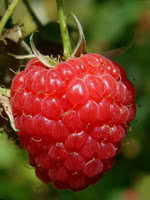Mon-Fri 9am - 5pm Mountain time
Western Snowberry vs Red River Raspberry
Symphoricarpos occidentalis
Rubus x Red River
NOT AVAILABLE THIS SEASON - MIGHT RETURN
Like the Common Snowberry, the Western Snowberry is a small shrub with pink flowers useful for feeding livestock and preventing erosion. Unlike the common species, however, the Western Snowberry is much more suited to wet conditions, capable of persevering through poor soil drainage and occasional flooding.
After the Snowberry's flowers have bloomed, it produces berries which often last on the plant through winter. These berries are toxic to humans, but livestock and local wildlife love them! Those hoping to attract wildlife to their property can plant Snowberry and expect to see animals foraging on it much later in the year than other plants.
Red River Raspberry is a cold hardy and adaptable raspberry. Its berries are smaller than typical raspberries and ripen from August until frost. The berries are firm, ruby red and excellent for eating right from the bush.
Red River Raspberry is a primocane-fruiting variety, meaning it produces fruit on first-year canes (the current season’s growth). They are also referred to as ever-bearing or fall-bearing. Cut stalks down each winter or early spring to get higher fruit yields.
Raspberries are self-fertile, meaning they do not require cross-pollination from another variety to produce fruit.
Western Snowberry Quick Facts
Red River Raspberry Quick Facts
Toxicity: berries are toxic to humans

